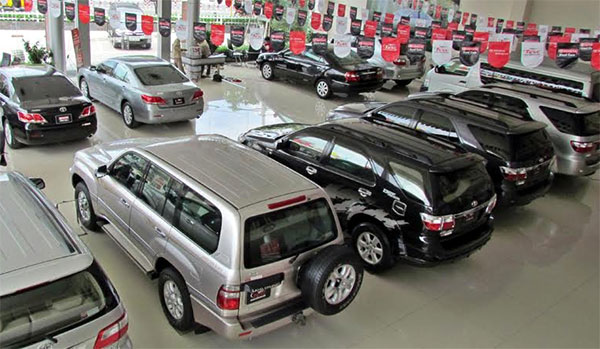Motor import sector shifts gear as tariff cuts loom
 |
| illustration photo |
In accordance with the integration roadmap, the tariffs levied on cars imported from ASEAN countries into Vietnam was lowered to 40 per cent since the beginning of 2016 from the previous rate of 50 per cent, and will continue to fall to 30 per cent in 2017 before its abolition in 2018.
As a result, Thailand, ASEAN’s main auto production hub, took over from China, South Korea, and Japan to become the top seller to Vietnam in terms of units sold.
By the end of May 2016, the number of completely-built units imported (CBU) from Thailand hit 12,538 units, up 50.8 per cent year-on-year. This is a noteworthy jump as by the end of 2015 Thailand only ranked fourth on the list of international sellers.
“Driven by the tariff cuts we have seen a sharp increase in the import of below-nine-seater cars and pick-ups from Thailand,” said Tran Thanh Hai, deputy head of the Ministry of Industry and Trade’s Import-Export Department.
The Vietnam Automobile Manufacturer’s Association (VAMA) told VIR earlier last week that the relatively cheaper price of Thai automobiles has increased pressure on local producers, mirrored by a significant drop in sales of many models.
For example, Hino Motors Vietnam (a subsidiary of Japan’s Hino Motors, Vinamotor, and Sumitomo group) experienced a fall of 21 per cent. Meanwhile, TCIE Vietnam (a subsidiary of Malaysian group Tan Chong Motor Holdings) fell 14 per cent. Worse still, SYM’s Auto saw a 91 per cent plummet in sales volumes when compared to the same period last year.
Honda saw its total market share decrease from 3.7 per cent to 3.5 per cent. Other producers of sedans and small trucks may also be negatively impacted.
The tariff cut, therefore, created huge advantages for imported vehicles, especially amid increasing rates of domestic taxes.
Vehicles sold in Vietnam are subject to several tax rates including special consumption tax (SCT), tariffs on imported parts, and taxes on components to assemble cars (CKD components).
Since the beginning of July, the SCT rate for cars with engines larger than three litres has risen sharply to 90-150 per cent, from the previous rate of 60 per cent. To avoid the tax hike, which would see a colossal sum tacked on to the price of “luxury vehicles”, local consumers have already rushed to order their dream car during the first six months of this year.
By the end of May, Toyota Vietnam had sold 929 imported Lexus, a massive increase of 92 per cent.
Also in June, the Ministry of Finance (MoF) drafted a circular raising the import duty rates applied to 19 lines of automobile parts by 2 to 15 per cent, from the current average level of 15.3 per cent.
The 19 product lines are those classified as “already available locally” and currently taxed under the ceiling rate of Vietnam’s WTO commitments on import tariffs.
As this will raise the production cost of vehicles manufactured domestically, VAMA spoke out against the MoF’s move.
“It is standard international practice that CKD components are taxed lower than CBUs. The MoF’s draft circular is going against its declared intentions of encouraging local manufacturing activities,” stated the association.
What the stars mean:
★ Poor ★ ★ Promising ★★★ Good ★★★★ Very good ★★★★★ Exceptional
Latest News
More News
- EVN launches major power infrastructure projects nationwide (December 19, 2025 | 18:17)
- VAL inaugurates second production line to meet domestic animal feed demand (December 19, 2025 | 16:37)
- Sun Group pioneers urban tram system in Phu Quoc (December 19, 2025 | 15:00)
- Top 10 notable events of Vietnam’s industry and trade sector in 2025 (December 19, 2025 | 14:00)
- Seven major projects launched to drive Hanoi’s next growth phase (December 19, 2025 | 14:00)
- Rare, beautiful, sustainable: the mark of iconic real estate (December 19, 2025 | 08:00)
- Mondelez Kinh Do - a chapter of purpose-led leadership in Vietnam (December 18, 2025 | 09:44)
- VNPAY services receive the highest-level PCI DSS international security certificates for six consecutive years (December 17, 2025 | 23:47)
- F&N deepens investment in Vinamilk (December 17, 2025 | 09:00)
- Long-term capital seen as key hurdle to green growth (December 16, 2025 | 08:00)


















 Mobile Version
Mobile Version